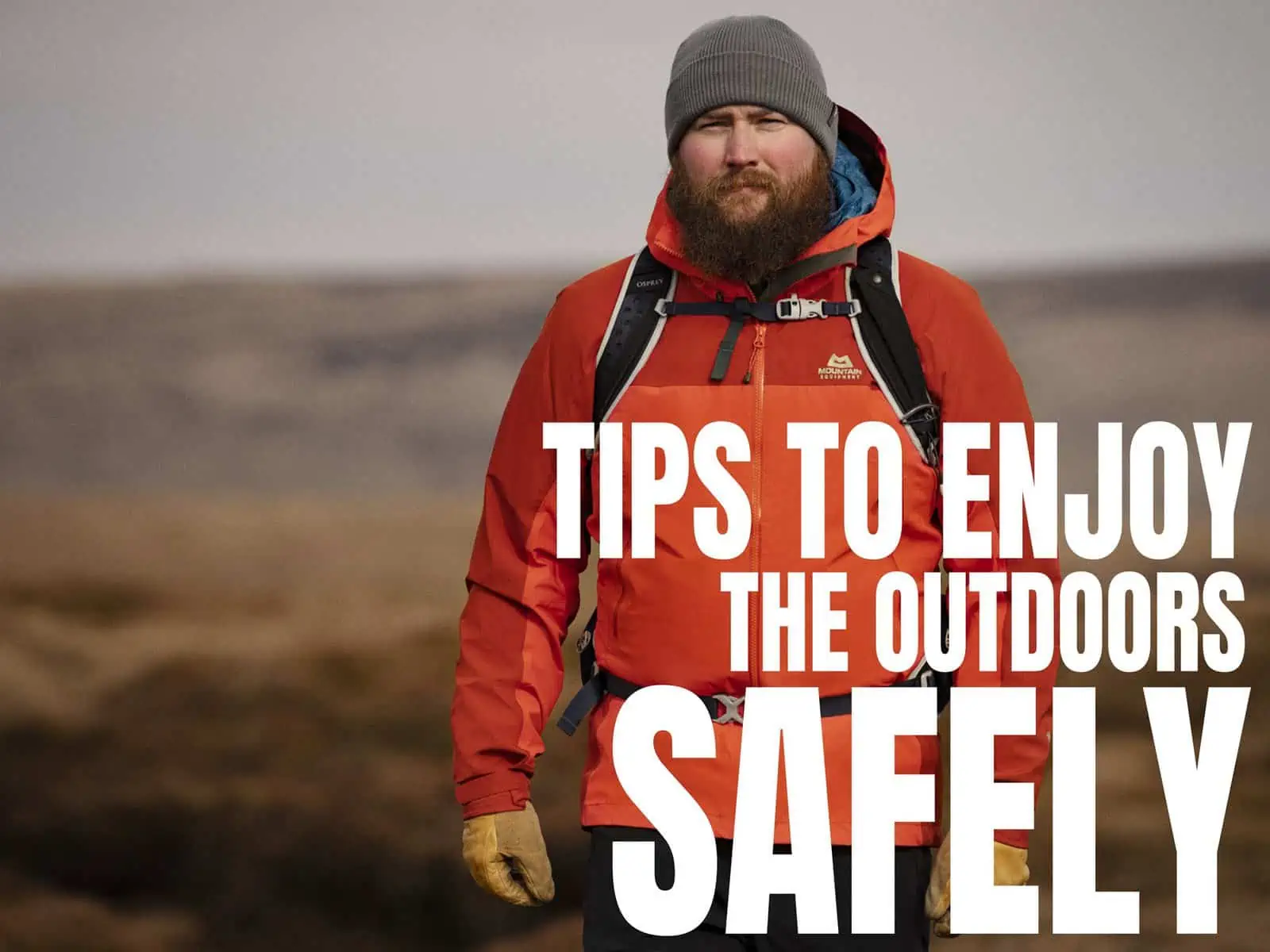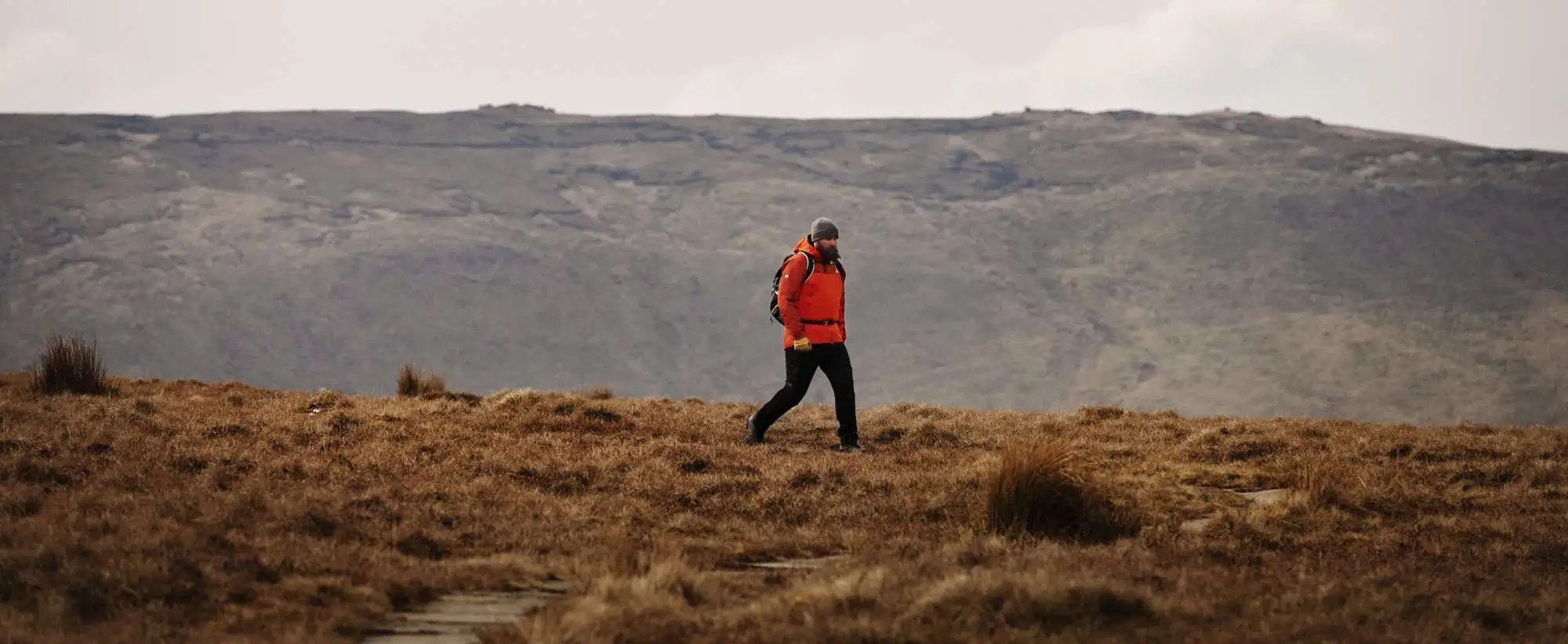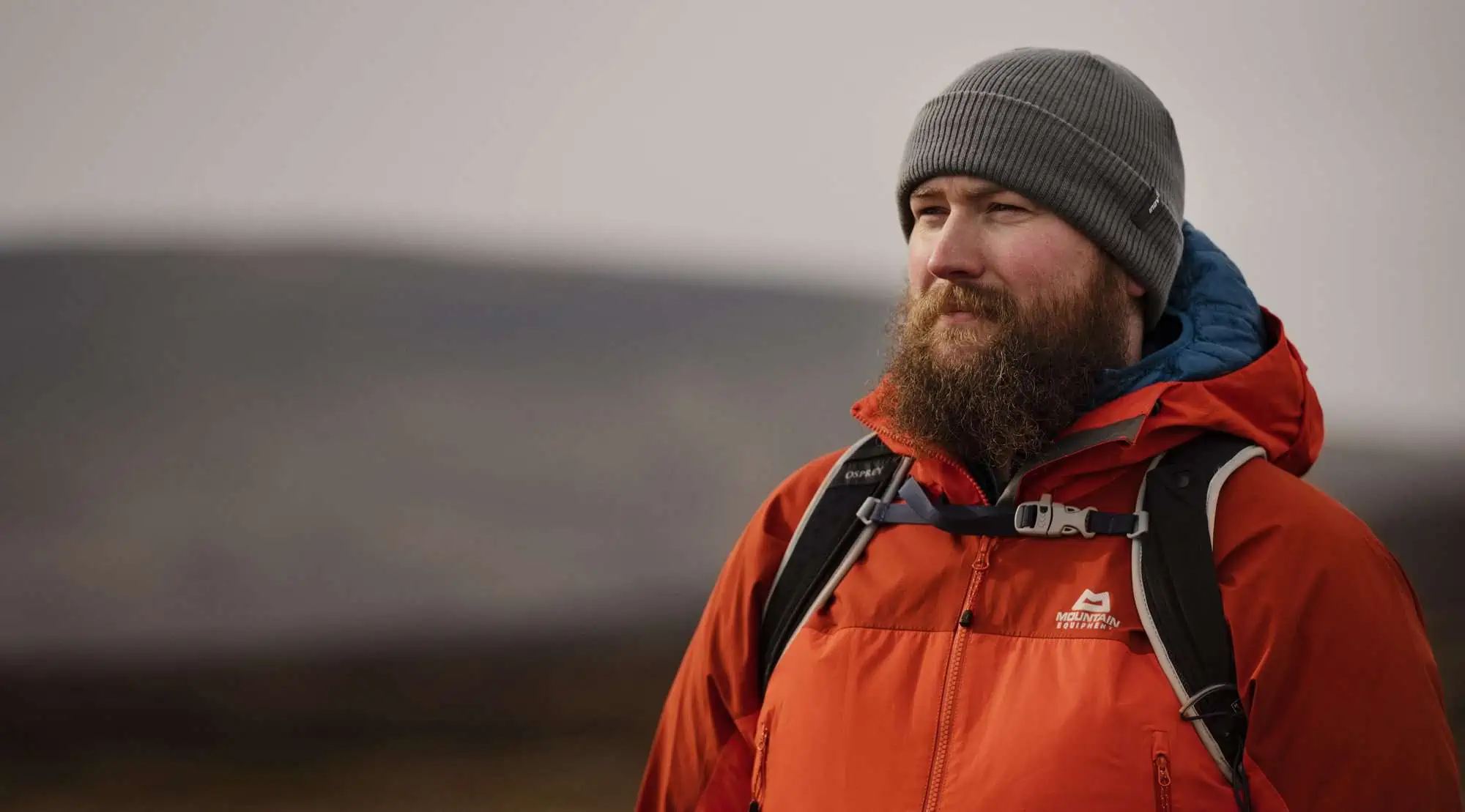In collaboration with Simon Pitman, a volunteer with the Lochaber Mountain Rescue Team and Ellis Brigham’s Fort William branch manager.
About the ‘Enjoy it Safely’ Guide
Safety should rightly be one of the main considerations on any trip into the outdoors – regardless of whether you’re embarking on a technical mountaineering expedition or simply a walk around your local woodland. But safety in the outdoors also comes with a hefty dose of toxicity. In an age when social media is one of the key channels of communication and information, any perceived flaw in technique or use or equipment can quickly be criticized, and this can be a demoralizing and off-putting experience. At worst, this can discourage people from going into the outdoors entirely.
As Simon points out, the fact of the matter is that any outdoors activity requires an amount of risk – we’d always be safer if we just stayed at home – but this risk is a part of what makes these activities appealing and exciting. Safety in the outdoors is therefore about managing and understanding these risks – especially in the context of you and your hiking mate’s skills and experience.
Understanding the current landscape: Building on a foundation of safety and a respect for Nature
Most of us get started in the outdoors by heading out with a friend or relative who already does it. Often, what we learn from these people will form the basis for our own outdoors practice and the foundation of our own understanding of outdoors safety.
As we become more experienced, clubs, groups, charities, and guiding communities provide valuable resources on which we can build our skills and understanding of safety. Safety in the outdoors isn’t a fixed asset – it’s a growing, evolving variable that we need to change and adapt as our skills and ambitions grow.
But there’s more to this. Simon told us that he firmly believes that an understanding of outdoor safety is closely linked to a better level of respect for nature and the environment. By learning to be safer hikers we can also naturally become more conscious towards and better stewards of the environment we choose to hike in.
“The better you manage outdoor safety, the more you engage with the environment and understand and respect it.”
— Simon Pitman
A keen outdoors person from an early age, Simon grew up in the South of England and had the opportunity to go hillwalking, climbing and camping whilst at school – activities that he connected better with than classroom-lead learning. Following a five-year stint as a Police Special Constable where he learned to thrive in high stress situations and took pride in helping people, Simon relocated to Fort William in Scotland where he became actively involved in the outdoor scene. A good friend of his, and climbing and skiing partner, who already volunteered with the Lochaber Mountain Rescue Team suggested Simon volunteer too. Simon has a lifetime of outdoors experience and relishes the unexpected, saying he can in the middle of the working day and within an hour of receiving a text be heading into the mountains to aid in a rescue.
Tips to Enjoy the Outdoors Safely
Safety in the outdoors is a massive topic and it can be daunting – not just for newcomers but even for seasoned hikers. Drawing on his vast experience in the outdoors, Simon shares his knowledge and top tips to help you ensure your next hike is as safe – and therefore as enjoyable – as it can be.
How can we enact change to make the outdoors more accessible?
The Enjoy it Safely Guide action points:
Be mindful when offering criticism
As you learn more and become more experienced in the outdoors, you’ll no doubt become aware of people who are doing things incorrectly. “This is especially the case with climbing and using technical mountaineering equipment. Blanket criticism is easy – especially on social media – but outdoor safety is a journey.” Says Simon. Even if someone’s technique or equipment setup isn’t perfect, it’s likely still offering some protection and criticism should build on this constructively. Of course, if someone is using a piece of equipment or doing something in a way that you know to be completely unsafe, then constructive criticism is far more useful than just telling them they have it wrong.
“I’ve never been as confident as I’d like to be with technical climbing equipment as I was so used to hearing criticism on how someone was using belay devices wrong or that a practice they saw someone doing was unsafe. Rather than discussing these points with the person, and suggesting ways to improve, they were made to each other. The reality with many of the points being made, were that how somebody was using equipment was making what they were doing much safer, but they could be safer again if they changed technique.”
— Simon Pitman
Simon points out that it’s important to remember that we were all beginners once and that, relatively, there’s always someone with more experience than us. Blanket negative language can be damaging to the confidence of many people, and we need to be mindful when we offer it out. Is what we have to say or how we were planning to say it potentially going to cause a problem? Is there a different way you can phrase something to have a better impact? Positivity is an important factor in education – encouraging people to be safe and to observe best practises outdoors is far more productive than criticising their failings.
If you’re looking to build your outdoors experience, there’s plenty of resources out there to leverage. For starters, Ellis Brigham have a range of well-written how-to guides focussing on core skills in several different outdoors activities including hiking, trail running, camping, climbing and mountaineering.
Be Responsible and Communicative
Safety in the outdoors sometimes requires making difficult decisions. For many, heading out on a big hike or adventure will happen during a holiday or planned trip. Due to limited time, it’s not surprising that you might only have limited time to factor in for a specific hike or climb you want to do. But flexibility in planning – especially in the face of changeable mountain weather – is an important consideration in safety planning. It’s natural that if you’re visiting an area to do a hike, you likely won’t want to cancel your plans due to bad weather. However, ‘summit fever’ can genuinely put you at risk and it’s incredibly important to consider if your skills are in alignment with the elements you’re being presented with on any given day. Is what you have in mind worth your safety – and the safety of the Mountain Rescue team who may need to attempt to rescue you?
“Similarly, when out on the hill, say hello and talk to people you see, chances are if you walk past someone, they’ve been where you’re going, and vice versa. You may be able to share knowledge or advice with each other.”
— Simon Pitman
“Safety is all about minimising risk but accepting it’s presence, decision making is key to that, from what equipment we use, where we go and what we do, there’s loads of advice on line or in books, and formal instruction available, targeting different demographics these are keys to safety and inclusivity. Just as importantly for me, it’s about every walker, biker or skier, saying hello and being friendly, there’s only positive outcomes if we all do this. ”
— Simon Pitman
Respect differing experiences
Whilst the move towards better inclusivity in the outdoors community has seen a slight diversification in the narrative surrounding peak bagging and macho language, the fact remains that they are still a very valid part of the outdoors experience for many people.
It’s important to keep in mind that most people generally don’t set out into the outdoors with the intention of harming themselves and that just because someone is setting out to do something at a more advanced level than you might, they are not automatically acting in an unsafe way. Safety and risk assessment in the outdoors are absolutely proportional to the individual and the decisions you take must reflect that.
Above all else, it’s important to respect other’s experience of the outdoors as being as valid and legitimate as your own, regardless of their level.
“Some people are on the hill to attempt an FKT or climb a harder grade, others are there on training courses, others are there to enjoy the view and see somewhere they haven’t before, all are equally deserving of being there.”
— Simon Pitman
Learn from Organisations and Groups who are Promoting Safe and Respectful Access
If you’re looking to develop your skills further or learn how to be safer in the outdoors in your particular area to help you push your outdoors experience further, look to organisations and groups who provide valuable resources around this. From in-person training to online advice and tools, arming yourself with the right information can be pivotal to enjoying it safely. “Local guiding communities can not only teach courses but are usually happy to just take a phone call to discuss ideas with people, local knowledge is a great tool to enjoy the outdoors safely.” Says Simon.
For instance, around Simon’s adopted home of Fort William in Scotland, organisations such John Muir Trust who have Nevis Rangers out on the ground in busy local areas or POW (Protect Our Winters) who target environmental activism in positive ways are both really effective examples of what can be done to increase awareness when it comes to outdoors safety and respect for the natural world.
The topic of safety in the outdoors can seem daunting and – at worst – off-putting for those who are new to the scene. However, an awareness of safety will not only ensure you have a better time yourself, but will also help keep those you share the trail with safe too and also help to build a better respect for nature. Safety in the outdoors isn’t a task you just accomplish – it’s an on-going and evolving process, something that develops hand-in-hand with our appreciation for and respect of nature.
WANT TO LEARN MORE? VISIT THE MAIN ACCESSIBLE OUTDOORS GUIDE HUB:






